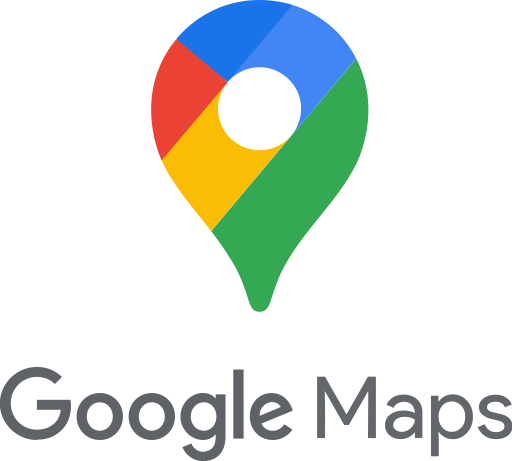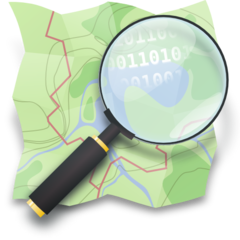Google Maps
Connect Google Maps to Webflow to display interactive maps, store locations, and location-based content on your website. Add everything from simple embedded maps to complex multi-location directories with custom markers and real-time data.

How to integrate Google Maps with Webflow
Connect Google Maps to your Webflow site using several methods, from simple embeds to advanced API integrations. Choose based on your technical skills and feature requirements.
Use the Dynamic Map App
The Dynamic Map app by No Code Flow provides the most comprehensive Google Maps integration for Webflow, connecting directly to your CMS without code. Install from the Webflow Marketplace.
What you can do:
Connect maps to CMS collections for automatic updates
Add custom markers and pins with unique icons per location
Enable search and filtering by location, category, or custom fields
Style maps to match your brand using Google Maps themes
Display info windows with rich content on marker click
The app handles all API connections and provides a visual interface within Webflow's Designer, making it ideal for directories, store locators, and multi-location businesses.
Native features, direct embeds and widgets
Use Webflow's built-in tools and Google's embed features for simple map implementations without external apps.
Webflow Map element:
Add the Map element from the Components panel
Enter your location address
Add your Google Maps API key in site settings
Style the map container with Webflow's visual tools
Google Maps iframe embed:
Visit Google Maps and search your location
Click Share > Embed a map
Copy the iframe code
Add an Embed element in Webflow and paste the code
This method requires no API key for single static locations but offers limited customization. For dynamic locations from your CMS, modify the embed code to include collection fields.
Build with Webflow and Google Maps APIs
For complete control over map functionality, implement Google Maps directly using their JavaScript API. This enables advanced features like real-time updates, custom overlays, and complex interactions.
Why choose API integration:
Greater control over map behavior, ability to integrate multiple data sources, and access to advanced features like route planning, geocoding, and place details. Essential for apps requiring real-time location updates, complex filtering, or integration with external systems. See the Maps JavaScript API documentation.
Set up the Maps JavaScript API
Create and configure your map:
Add a div element with an ID to your Webflow page
Include the Maps JavaScript API script in your site's custom code
Initialize the map with your configuration options
Add your API key from the Google Cloud Console
Core capabilities:
Initialize custom maps with new google.maps.Map()
Add interactive markers using new google.maps.Marker()
Create info windows with new google.maps.InfoWindow()
Style map appearance using custom JSON themes
Handle user interactions with event listeners
The JavaScript API provides granular control over every aspect of your map, from visual styling to user interactions.
Implement location services
Connect location data from your CMS:
Store addresses or coordinates in Webflow CMS collections
Use the Geocoding API to convert addresses to coordinates
Loop through collection items to create map markers dynamically
Update locations automatically when CMS data changes
Advanced location features:
Search nearby places with the Places API
Calculate directions using the Directions API
Show Street View imagery with the Street View API
These APIs work together to create rich location experiences, from finding nearby businesses to providing turn-by-turn directions.
What you can build
Integrating Google Maps with Webflow enables powerful location-based features for your website.
Store locators: Create searchable directories of retail locations with real-time hours, contact info, and directions for each store
Real estate portfolios: Display property listings on interactive maps with filters for price, size, and amenities
Event venue maps: Show event locations with parking areas, entry points, and nearby transportation options
Service area visualizations: Display delivery zones or service coverage areas with custom boundaries and availability indicators
Frequently asked questions
Yes, Google requires an API key for all interactive maps. Create your key in the Google Cloud Console, enable the Maps JavaScript API, and add billing information (even for free tier usage). Google provides $200 monthly credit, covering about 28,000 map loads. Find setup instructions in Google's API documentation.
Store location data (addresses or coordinates) in a CMS collection, then use either the Dynamic Map app or custom JavaScript to plot markers. With custom code, loop through your collection items and create markers for each location. The Maps JavaScript API documentation provides examples for adding multiple markers and marker clustering for better performance.
Yes, use the Maps JavaScript API with custom styling. Create your style JSON using tools like Snazzy Maps, then apply it when initializing your map. The map styling documentation shows how to customize colors, hide features, and create unique map themes. The Dynamic Map app also supports custom styles through its interface.
Common causes include missing or incorrect API key, exceeded quota limits, or domain restrictions. Check your API key configuration in the Google Cloud Console, ensure billing is set up, and verify your domain is whitelisted. The error messages guide helps diagnose specific issues.
Each map instance requires separate API calls and resources, which can slow page load times. For better performance, use a single map with multiple markers instead of multiple map instances. Consider lazy loading maps or using static map images for preview. The optimization guide provides performance tips.

Description
Google Maps is a comprehensive web-based mapping service that provides detailed geographical information, navigation, and real-time data. It offers interactive maps, street view imagery, business listings, and location-based services through embeddable widgets and developer APIs.
This integration page is provided for informational and convenience purposes only.

OpenStreetMap
Connect OpenStreetMap's collaborative mapping platform to your Webflow site for cost-effective, customizable maps. Display store locations, visualize service areas, and create interactive location-based experiences without Google Maps fees or restrictions.

Stay22
Connect Stay22's accommodation booking map to Webflow sites with iframe embeds or custom API integration.

Elfsight Google Maps widget
Add Google Maps \ Store Locator to Webflow.


